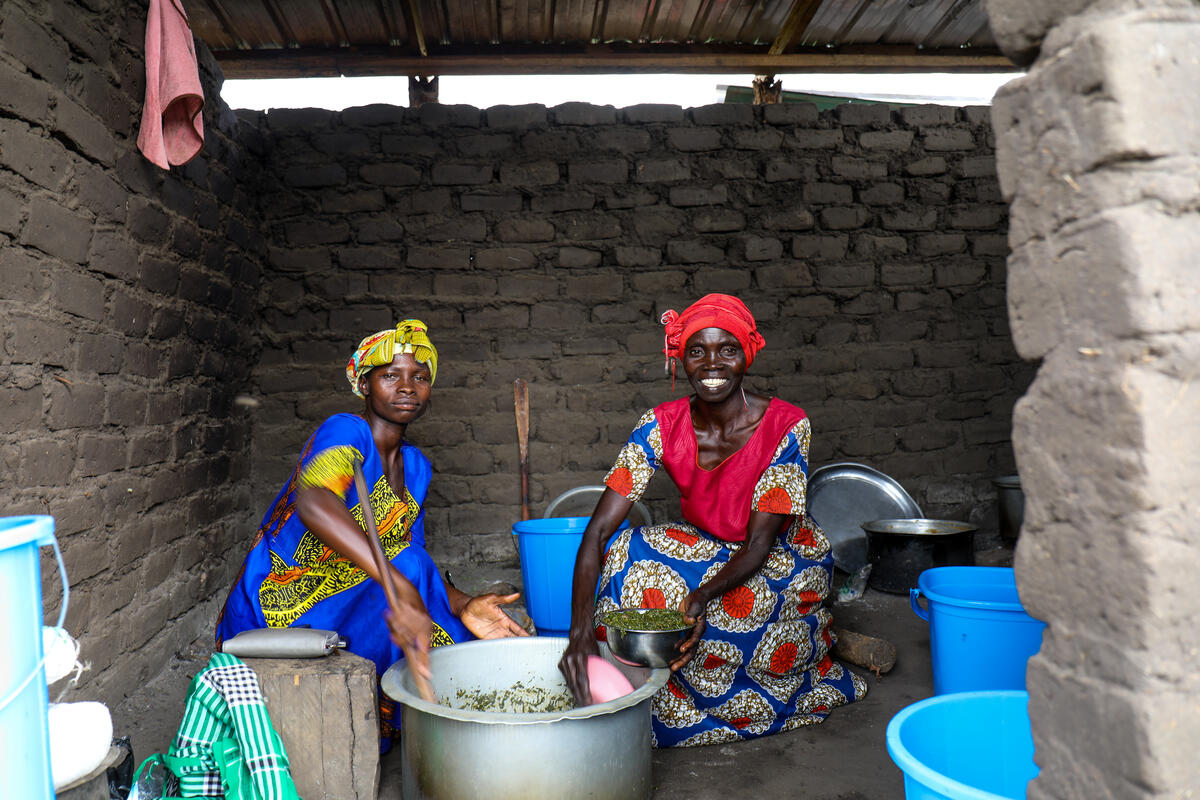UNHCR convoys stockpile supplies in South Sudan before rain blocks roads
UNHCR convoys stockpile supplies in South Sudan before rain blocks roads

JUBA, South Sudan, 1 April (UNHCR) - Trucks from the UN Refugee Agency have been moving steadily along the difficult roads of South Sudan in an operation to stockpile relief supplies for 238,000 refugees before the onset of the rainy season in May makes the route impassable for the next six months.
The dispatched 117 trucks from South Sudan's capital Juba to hard-to-reach areas in Unity and Upper Niles States will not only ensure the basic needs of refugees are covered through the rest of the year but will remove the need for expensive airlifts.
"Pre-positioning is the most effective way to ensure a timely humanitarian response to those who are most in need during times of crisis," said Ahmed Warsame, UNHCR Representative in South Sudan. Commodities such as mosquito nets, blankets and plastic sheets "are not only essential to the well-being and dignity of refugees, but can often help save lives."
With the successful arrival of the first road convoy in Maban in Upper Nile State since May 2013, UNHCR is scaling up delivery by road and phasing out costly airlift relief. Shifting to road cargos, says Warsame, "will help us cut down on transport costs and preposition more aid supplies where most needed."
Despite the ongoing civil conflict and volatile security, 57 trucks have so far made it safely to Pariang County in Unity State and 42 others have reached Upper Nile's Maban County. These two areas alone host six refugee camps and 90 percent of South Sudan's refugee population. The trucks can take weeks to maneuver along poor roads, through roadblocks and across rivers by ferry.
Preparations are underway to load another 130 trucks with non-food items for onward dispatch to refugee camps and settlements north of Juba. UNHCR's plan is to stockpile enough relief supplies in field key hubs to ensure that the basic needs of hundreds of thousands refugees are covered until after the rainy season ends in November.
Last year UNHCR spent nearly US$6 million to airlift 1,400 tons of relief aid to Unity and Upper Nile States. So far this year, said Warsame, "we shipped nearly four times the volume of 2014 and for one third of the cost."
A single 40-tonne truck can carry nearly seven times the volume of a standard aid cargo aircraft. Warsame said delivering a blanket to each refugee in Unity and Upper Nile State would require 12 trucks instead of 72 round-trip flights.
As the country plunged into civil conflict in December 2013, UNHCR ramped up aid in South Sudan. UNHCR is active in nine of South Sudan's 10 states, with two-thirds of its 450 staff in remote locations near refugee camps and areas of internal displacement.
In coordination with the government of South Sudan and partners, UNHCR assists and protects refugees and works with other UN agencies to provide relief for internally displaced South Sudanese.
At the end of February there were 255,949 refugees in South Sudan, the vast majority Sudanese living in six camps across the northern states of Unity and Upper Nile. Smaller numbers of refugees from the Democratic Republic of Congo, Central African Republic and Ethiopia live elsewhere in the country. The South Sudanese government gives prima facia recognition to refugees crossing its borders.
Since 15 December 2013, when violence broke out across South Sudan, there are also about 1.5 million internally displaced people.
By Rocco Nuri in Juba









